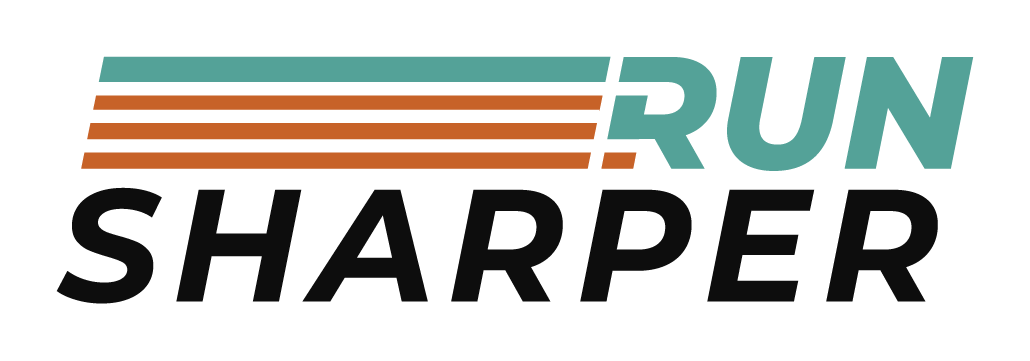The Gear You Actually Need to Run Your Best
Don’t make the mistake of thinking running is a “cheap” sport. Yes, at a basic level all someone needs is a pair of shoes, but serious runners know that costs quickly add up once performance becomes a priority. Here’s my hierarchy of gear (other than clothing); don’t spend on a category until you’ve taken care of the items preceding it:
#1: Shoes
Obviously start here. Don’t overpay for features you don’t understand or need, but don’t pinch pennies either and end up with something that wasn’t actually designed for high-mileage running. If you have a good local running store in your area, support them and benefit from their staff’s knowledge without letting them upsell you. If you have to shop online, read product reviews from running websites and customer reviews on sites that only sell running shoes. Once you find the right daily trainer, consider stocking up once prices start to drop as the next model gets released. This way, any annoying design changes don’t catch you out and leave you scrambling to find a new shoe. I have a pair of expensive dog walking shoes because a brand messed up a model update that resulted in way too much heel slippage for my liking. The shoes weren’t great for running fast, but thankfully the brand fixed the issue on the next model.
#2: GPS Watch
I’ll confess that I waited way too long before upgrading my trusty Timex Ironman to a Garmin Forerunner. I was content mapping out routes before a run, memorizing the mile markers, and then running by feel to hit the right splits. This method works, but it’s tedious. It also makes it harder to train properly while travelling and you’re running in a new place where you don’t have your mile markers memorized. And without a GPS watch synced to your training log, you’ll be manually uploading all your workouts. Successful, happy runners don’t make training more complicated than it has to be. Take the plunge and get a good GPS watch.
#3: Recovery Tools
Your injury history and training style will influence your choices here, but a bare minimum would be a foam roller and massage ball for spots the foam roller can’t reach properly. If you travel often for races and don’t want to haul around a foam roller, I recommend The Stick self roller. I haven’t tried the new breed of percussive massage tools (Theragun, etc.) so I can’t recommend those yet. There is a product for almost every running injury. For example, when I suffered from shin splints during marathon training, the 110% compression sleeves with icepack pockets became essential to recovery.
#4: Home Strength Training Equipment
Strength training is crucial for injury prevention and performance. You are more likely to get some training in if it’s convenient, so even if you have a gym membership, it’s a good idea to keep some basics at home. At a minimum, pick up a few resistance bands, especially mini bands for hip strengthening exercises. I have had good experience with RubberBanditz bands and the Slingshot Hip Circle for this purpose. Next, I highly recommend the 32KG adjustable kettlebell from Kettlebell Kings. It’s not cheap, but they run frequent sales. 32KG is enough weight for many exercises a distance runner needs to do. It won’t replace heavy squats and deadlift variations, but it’s still a good investment. You can do most of your core work with just bodyweight, but an ab roller is a smart way to add some variety and difficulty.
#5: Heart rate monitor
Yes many watches now contain wrist-based optical sensors, but almost everyone agrees that a chest-strap is more accurate. If your coach is prescribing heart rate based training sessions, then you should definitely invest in a chest strap. Even if you run primarily by pace, reviewing heart data can unlock clues to performance gains over time. A chest strap that uses Bluetooth and ANT+ gives you most versatility if you’ll be doing cross training and want the strap to connect to devices other than just your watch. My Garmin HRM-Dual connects to everything with little hassle. Make sure you clean the strap regularly to keep everything functioning properly.
#6: More shoes
A second pair of shoes is a wise investment for those with a heavy training volume. I do most of my training in the Adidas Adizero Boston, but I like switching to the cushier Solar Glide for long, slow runs. Having two pairs extends the life of both and also provides a useful mental stimulus. When the Boston’s are on, I know it’s time to pick up the pace. Lacing up the Solar Glides provides a needed reminder to be less fast that day and not overtrain.
#7: Water contraptions other than bottles
There is a time and place for fuel belts, vests, and packs, but I see too many runners deploying these on routine training runs. Assuming proper hydration leading up to a run, most people should be able to complete a 60 minute run without needing the bulk of water carrying apparel. For hot, humid days, a hand held bottle with an electrolyte drink will probably be sufficient for longer runs, especially if you can plan a route with a water fountain along the way for a refill. I use an Amphipod bottle with a comfortable hand sleeve that lets me carry the bottle without having to tense up to hold it. Even though the weight is minimal, I switch hands every half mile or so to minimize any form imbalances. For interval training on hot days, choose a route where you can drop a bottle at the end of the interval and take a drink on the recovery jogs just like you would do if you trained on the track.

